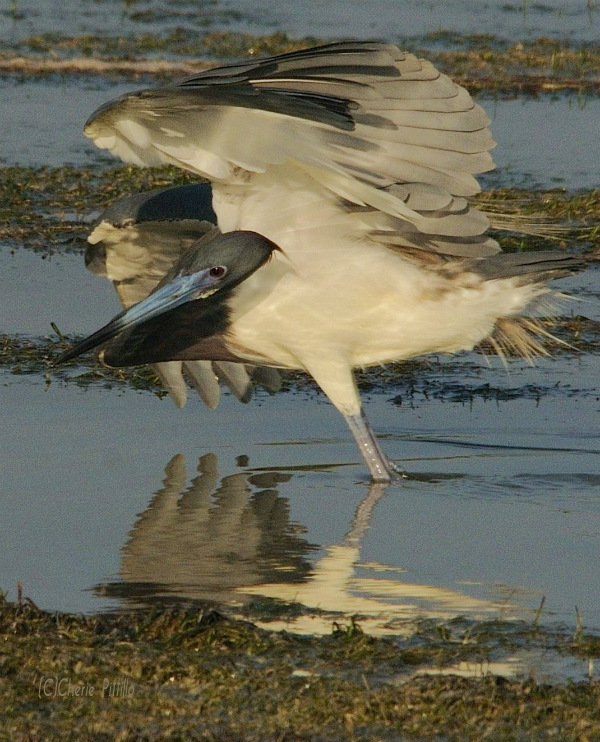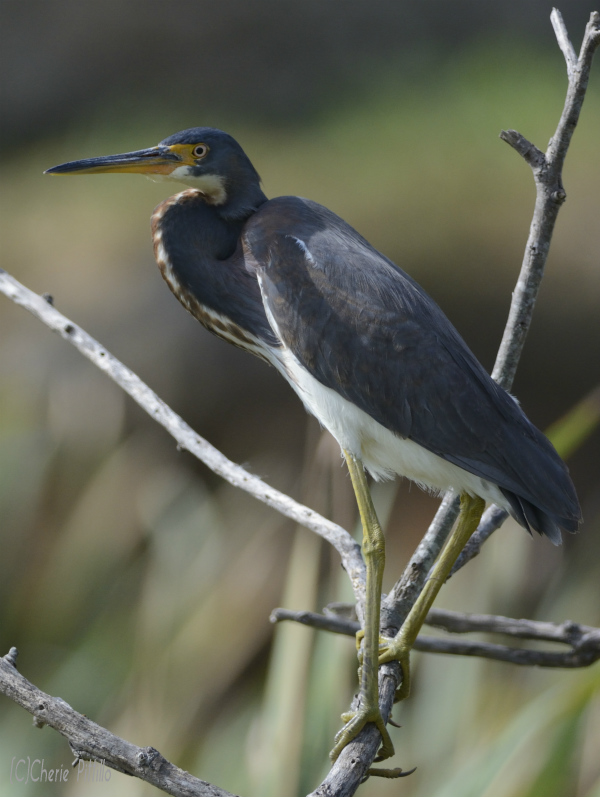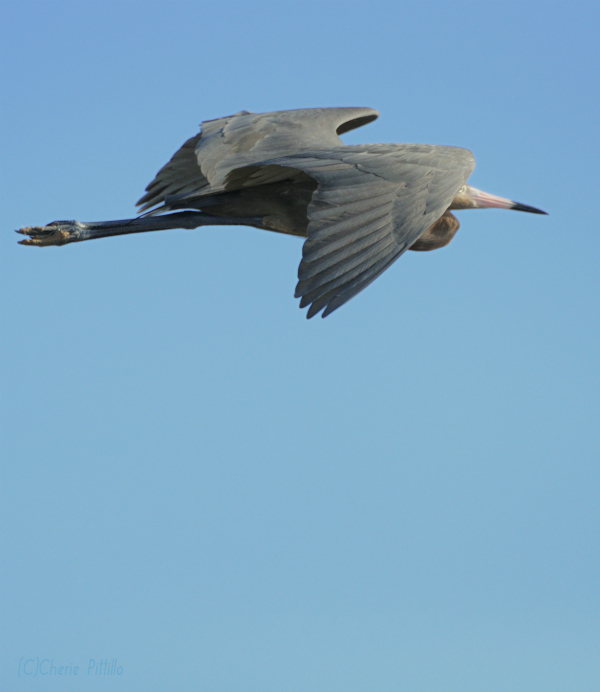Take a gander at these photos of two wading birds found along the Yucatan coast in shallow water. From the back, both look similar from a distance even if the first one is slightly smaller. Is either one a heron or an egret or maybe even a crane?”
“Compare these two photos. They look similar. Are they both herons or egrets?”
How about these next two images? Both species use their wings as shade for unsuspecting fish to swim to the “dark side” and are often observed running and dancing in the water. Sometimes the first one also stalks its prey. What would your guess be?
“And just for fun, Do you think this bird with white plumage is a heron or or an egret? Look at the color of the bill.”
“Now check out the bill colors in this set. Do you see a difference?”
Photos 1, 2, 4, 6, 9, 10, are the Tricolored Heron, (Egretta tricolor, Garza tricolor), formerly called Louisiana Heron. Yes, 9 and 10 are the same species. Photo 10 shows the plumage and bill color during breeding season. Surely you’ve noted the distinguishing white belly and white streak on the neck of the Tricolored Heron. Also as you look at birds, notice the leg color.
Photos 3, 5, 7, and 8 are the Reddish Egret, (Egretta rufescens, Garza Canela).The bird with white plumage is the white morph of the Reddish Egret. Look closely at that hot pink bill in 7. Now name this species in flight.
Yep, it’s a Reddish Egret. Did you notice the dark colored legs as well as the pink bill? The Tricolored Heron lacks dark stockings.
Let me now reveal that egrets are in the heron family. What are the differences? Both have long necks and long legs as wading birds and both crook their necks into an “S” curve in flight. Certain sources mention that egrets are mainly white and could be smaller in size. But I don’t think those are enough distinctions. Stay tuned for Part 2 to explore 9 species of mostly coastal, white-feathered wading birds. We’ll concentrate on both bill and leg colors as easy ways to recognize those species.
GO OUTDOORS TO DISCOVER NATURE TO HAVE NO “EGRETS.”
DISCLAIMER: References do not agree on details about this species. Here are my resources: Sal a Pajarear Yucatan Guia de Aves, A Guide to the Birds of Mexico and Northern Central America, Birds and Reserves of the Yucatan Peninsula, http://macaulaylibrary.org/ a website from Cornell Lab of Ornithology, Lives of North American Birds,
http://www.earthlife.net/birds/herons.html
The Everglades Handbook: Understanding the Ecosystem, Third Edition
Cherie Pittillo, “nature inspired,” photographer and author, explores nature everywhere she goes. She’s identified 56 bird species in her Merida, Yucatan backyard view. Her column, published on the 7th and 21st of each month, features anecdotes about birding in Merida, Yucatan and beyond. Contact: [email protected] All rights reserved, ©Cherie Pittillo
















1 comment
Love these articles about egrets, herons and more. Great pictures, great info, thanks Cherie